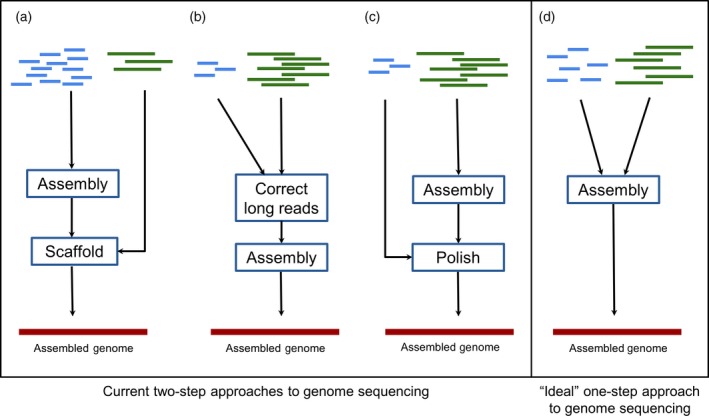Figure 2.

Approaches to genome sequencing.
Currently, when approaching genome sequencing, the method used depends on the read lengths available: (a) When more short reads are available, they are first assembled into contigs, which are then scaffolded, guided by the long reads. When more long reads are available, two assembly options exist. Either (b) short reads are used to first correct the long reads, which are then assembled or (c) the long reads are first assembled after which the short reads are used to ‘polish’ the assembly. As these approaches lose information at each step, a method (d) that could combine long and short reads in a single step (theoretically leading to an improved genome assembly) would be optimal.
